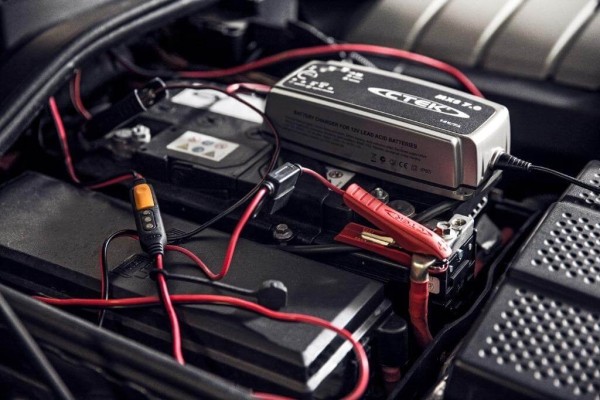Is it worth charging a car battery?
It's a little trickier (and perhaps riskier) to recharge a dead automobile battery than a smartphone. You don't want to accidently touch battery acid or get electrocuted. If you don't give the battery enough time to charge, you also don't want to end up (again) with a dead battery. Learn how to safely charge a car battery and how long to let your car battery charge by following along.
WHAT TO DO BEFORE CHARGING A BATTERY
CHECK YOUR MANUAL FIRST.
Because every car is unique, your manufacturer may have special recommendations for your particular make and model.
2. ACT SAFELY.
Make sure the battery is being charged away from any flames, sparks, or smoke. Remove all jewellery as well, as it could be dangerous. Put on safety glasses and gloves as well.
3. SMELL
Do you detect a stench similar to that of rotten eggs? If so, avoid attempting to charge the battery since it may be leaking hazardous gas. Keep away from the vehicle, have it towed, and let a mechanic to examine it.
4. VERIFY THE HEAT
The battery case may have been working harder than necessary if heat is emanating from it. Before attempting to charge the battery, keep the hood up and allow it to cool.
5. STAY AWARE OF CORROSION.
Around your battery ports, corrosion typically appears as a greenish, crusty material. In the majority of lead-acid batteries, it is a very typical by-product of battery acid vapours coming into contact with the air. The electrical system of your car may be compromised, which would make it more difficult for the battery to obtain a charge. Cleaning the corrosion off with a brush and a paste-like mixture of water and baking soda will remove it.
A PORTABLE CAR BATTERY CHARGER USAGE
You are prepared to take action after setting up your batteries. Follow these instructions if you have access to or are fortunate enough to have a battery charger in your trunk. Keep in mind that you can use the charger to either fully recharge or fast jumpstart your battery, depending on the circumstance (and the type of charger).
1. CONNECTING THE CHARGER TO THE BATTERY IS STEP ONE.
This method is comparable to that used to jumpstart a battery. Make sure the charger and your car are both turned off first. Next, connect the positive (red) clamp to your battery's positive post.
2. PREPARE THE BATTERY CHARGER
You must change the voltages and amps on the charger. Lower amps will require more time to charge, but they might also produce a more dependable charge. However, if speed is what you're after, flick the switch or set the dial to high. Just be careful to abide by the charger's instructions and any advice provided in your owner's manual.
The negative (black) clamp should now be fastened to a secure location on the body or chassis of the vehicle. Although the negative terminal of the battery can alternatively be connected to the black clamp, doing so is not recommended for safety reasons. Even the smallest spark could cause an explosion or fire if the battery is leaking hydrogen gas.
3. TURN ON THE CHARGER.
Check to see if your charger needs to be plugged into a power source. If not, turn it on and allow it to function. Depending on the kind of charger you have, it can shut off immediately when the battery is full or after a certain amount of time.
4. UNPLUGG THE CHARGER.
Turn the charger off and, if necessary, remove it from the power source once the battery has regained the ability to start a car. It's time to remove the clamps. It may seem paradoxical, but you should remove the negative (black) clamp first, then the positive (red), clamps, in the reverse sequence.
HOW LONG TO CHARGE A CAR BATTERY
Depending on the charger's power and the voltage of the battery, it could take anywhere from a few hours to a few days to fully charge a battery. You can still drive your car with a partially charged battery, at least for a short distance, but if you don't wait for a complete charge, you run the risk of having to go through the entire process again. Check our range of CTEK Chargers here.
Don't immediately turn off the engine after using jumper cables to start it. Instead, drive for at least 15 minutes to allow the battery to recharge. If you turn off the engine too soon, you might find that you need another jumpstart.
No matter how long you leave a faulty battery connected to another vehicle or a charger, it won't be able to maintain a charge.
WHAT TO DO IF A CAR BATTERY WON'T HOLD A CHARGE
You will have to tow your vehicle to a garage that can repair the problem if the car battery cannot maintain a charge. A new car battery is necessary. Thankfully, here at Battery Group we stock batteries for most cars on the UK market and you can use our battery finder to find the right battery for your car. Learn how to use the reg finder here.






